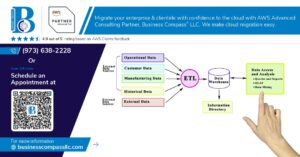Have you ever found yourself drowning in a sea of version numbers, unsure which update to use or how to properly label your own software releases? 🤔 You’re not alone. In the fast-paced world of software development, version control is crucial, yet it often feels like a complex puzzle.
Enter Semantic Versioning – your lifeline in the chaotic ocean of code updates. This elegant system, built on the simple principle of MAJOR.MINOR.PATCH, promises to bring order to the chaos and clarity to your versioning strategy. But how exactly does it work, and why should you care? 🧐
In this comprehensive guide, we’ll unravel the mysteries of Semantic Versioning, breaking down each component and exploring how to implement it effectively in your projects. From understanding the significance of each number to mastering advanced concepts, we’ll equip you with the knowledge to version your code like a pro. So, buckle up as we embark on a journey to transform your versioning practices and elevate your development workflow! 🚀
Understanding Semantic Versioning
What is Semantic Versioning?
Semantic Versioning, often abbreviated as SemVer, is a standardized system for versioning software. It provides a clear and consistent way to communicate changes in your codebase to both developers and users. SemVer uses a three-part version number in the format of MAJOR.MINOR.PATCH, where each component has a specific meaning and purpose.
The significance of MAJOR.MINOR.PATCH
The MAJOR.MINOR.PATCH format is the cornerstone of Semantic Versioning. Each component represents a different type of change:
| Component | Meaning | When to increment |
|---|---|---|
| MAJOR | Breaking changes | Incompatible API modifications |
| MINOR | New features | Backwards-compatible additions |
| PATCH | Bug fixes | Backwards-compatible corrections |
This structure allows developers to quickly understand the nature and impact of version changes.
Benefits of using Semantic Versioning
- Clear communication of changes
- Easier dependency management
- Improved stability and predictability
- Facilitates automated tooling and processes
Semantic Versioning provides a framework that helps developers maintain their code more effectively and allows users to understand the potential impact of updates.
Common misconceptions about versioning
-
Myth: Version numbers should always start at 1.0.0
-
Reality: Initial development can use 0.x.x versions
-
Myth: Minor updates never introduce new features
-
Reality: Minor updates can add functionality without breaking existing APIs
-
Myth: Semantic Versioning is only for public libraries
-
Reality: It’s beneficial for all software projects, including internal ones
By adhering to Semantic Versioning principles, developers can avoid these misconceptions and create a more robust versioning strategy for their projects.
Breaking Down the MAJOR Component
When to increment the MAJOR version
The MAJOR version in semantic versioning represents significant changes that introduce incompatibilities with previous versions. Incrementing the MAJOR version is a crucial decision that should be made carefully. Here are key situations when you should consider incrementing the MAJOR version:
- Breaking API changes
- Removal of deprecated features
- Significant architectural changes
- Major refactoring that affects public interfaces
| Change Type | Example | MAJOR Increment? |
|---|---|---|
| API Change | Renaming a public method | Yes |
| Feature Removal | Removing a deprecated class | Yes |
| Architecture | Switching from monolith to microservices | Yes |
| Internal Refactor | Optimizing private methods | No |
Backward compatibility considerations
When incrementing the MAJOR version, it’s crucial to consider backward compatibility:
- Document all breaking changes thoroughly
- Provide migration guides for users
- Consider maintaining the previous major version for a transition period
- Implement deprecation warnings in the previous version
Examples of MAJOR version changes
Let’s examine some real-world examples of MAJOR version changes:
- Python 2 to Python 3: Introduced significant language changes
- Angular 1.x to Angular 2+: Complete rewrite of the framework
- React 16 to React 17: Changes in event delegation and JSX transform
These examples demonstrate how MAJOR version increments signify substantial changes that may require significant effort for users to adopt. By understanding when and how to increment the MAJOR version, developers can effectively communicate the impact of their changes to users and maintain a clear versioning strategy.
Exploring the MINOR Component
Criteria for incrementing MINOR version
When it comes to semantic versioning, the MINOR component plays a crucial role in indicating new functionality without breaking existing features. Here are the key criteria for incrementing the MINOR version:
- New features or functionality
- Deprecation of existing functionality
- Substantial new additions to your public API
- Introduction of new optional parameters
| Criteria | Example |
|---|---|
| New feature | Adding a search function to a library |
| Deprecation | Marking an old method as deprecated |
| API addition | Introducing a new public method |
| Optional parameter | Adding an optional configuration setting |
Adding functionality without breaking existing features
The essence of a MINOR version update is to introduce new capabilities while maintaining backward compatibility. This approach ensures that users can upgrade without fear of breaking their existing implementations. Some strategies include:
- Extending existing classes or interfaces
- Adding new optional parameters with default values
- Introducing new methods or properties that don’t alter existing behavior
Best practices for MINOR version updates
To effectively manage MINOR version updates:
- Document all new features thoroughly
- Clearly communicate deprecated features
- Provide migration guides for optimal usage of new functionality
- Test extensively to ensure backward compatibility
- Consider the impact on performance and resource usage
By following these best practices, developers can confidently increment the MINOR version, providing users with enhanced functionality while maintaining a stable and reliable codebase. As we move forward, we’ll explore how the PATCH component addresses bug fixes and minor updates in semantic versioning.
Delving into the PATCH Component
Purpose of PATCH updates
PATCH updates are crucial for maintaining the stability and reliability of your software. They focus on backwards-compatible bug fixes, ensuring that your code remains functional without introducing new features or breaking changes. PATCH updates serve several key purposes:
- Bug resolution
- Security enhancements
- Performance optimizations
- Compatibility fixes
Here’s a breakdown of these purposes:
| Purpose | Description | Example |
|---|---|---|
| Bug resolution | Fixes issues that cause unexpected behavior | Correcting a calculation error |
| Security enhancements | Addresses vulnerabilities in the code | Patching a potential data leak |
| Performance optimizations | Improves code efficiency | Reducing memory usage |
| Compatibility fixes | Ensures smooth operation across different environments | Resolving conflicts with a specific OS version |
Identifying and fixing bugs
Effective bug identification and resolution are essential for maintaining a healthy PATCH update cycle. Consider the following steps:
- Implement comprehensive testing procedures
- Encourage user feedback and bug reporting
- Utilize error logging and monitoring tools
- Prioritize bugs based on severity and impact
Once identified, approach bug fixes methodically:
- Reproduce the issue in a controlled environment
- Analyze the root cause
- Develop and test the fix
- Document the changes for future reference
Balancing frequent PATCH releases
While it’s important to address bugs promptly, finding the right balance in PATCH release frequency is crucial. Too frequent releases can overwhelm users, while infrequent updates may leave critical issues unresolved. Consider these strategies:
- Group minor bug fixes into regular release cycles
- Reserve immediate releases for critical security issues
- Communicate clearly with users about the nature and importance of each PATCH update
- Monitor user feedback and adjust release frequency accordingly
By carefully managing your PATCH updates, you can maintain a stable and reliable codebase while ensuring a positive user experience. Next, we’ll explore how to implement Semantic Versioning in your codebase effectively.
Implementing Semantic Versioning in Your Codebase
Setting up initial version numbers
When implementing Semantic Versioning in your codebase, the first step is to set up initial version numbers. Start with version 1.0.0 for your first stable release. If you’re still in development, use 0.1.0 to indicate a pre-release state.
| Version | Meaning |
|---|---|
| 1.0.0 | First stable release |
| 0.1.0 | Initial development release |
| 0.0.1 | Experimental or proof of concept |
Tools for automating version management
Several tools can help automate the versioning process:
- Semantic Release: Automates version management and package publishing
- commitizen: Prompts for standardized commit messages
- standard-version: Automates versioning, changelog generation, and git tagging
Integrating versioning with your development workflow
- Use Git hooks to enforce commit message conventions
- Implement CI/CD pipelines that automatically update version numbers
- Configure your build system to include version information in compiled artifacts
Communicating version changes to users
Effective communication of version changes is crucial:
- Maintain a CHANGELOG.md file in your repository
- Use GitHub Releases or similar platforms to highlight new versions
- Include version numbers in your documentation and release notes
- Consider implementing an in-app update notification system
By following these steps, you’ll establish a robust Semantic Versioning system in your codebase. This approach ensures clarity for both developers and users, making it easier to manage dependencies and understand the impact of updates. Next, we’ll explore some advanced concepts in Semantic Versioning that can further enhance your versioning strategy.
Advanced Semantic Versioning Concepts
Pre-release versions and build metadata
Pre-release versions and build metadata are essential components of advanced semantic versioning. They allow developers to communicate additional information about a release without violating the core MAJOR.MINOR.PATCH format.
Pre-release versions
Pre-release versions are denoted by appending a hyphen and a series of dot-separated identifiers immediately following the patch version. For example:
- 1.0.0-alpha
- 1.0.0-beta.2
- 1.0.0-rc.1
These identifiers help distinguish between different stages of development and testing before a final release.
Build metadata
Build metadata can be added by appending a plus sign and a series of dot-separated identifiers following the patch or pre-release version. For example:
- 1.0.0+20130313144700
- 1.0.0-beta+exp.sha.5114f85
This information is typically used to include details about the build environment or commit hashes.
| Component | Example | Purpose |
|---|---|---|
| Pre-release | 1.0.0-alpha | Indicates development stage |
| Build metadata | 1.0.0+20130313144700 | Provides build-specific information |
Handling version conflicts
Version conflicts can arise when different components of a system have incompatible version requirements. To mitigate these issues:
- Use version ranges in dependency specifications
- Implement a robust dependency resolution system
- Regularly update and test dependencies
Semantic Versioning in dependency management
Semantic versioning plays a crucial role in dependency management by:
- Allowing precise specification of compatible versions
- Facilitating automatic updates of patch and minor versions
- Preventing unexpected breaking changes in major version updates
Version lifecycles and deprecation
Managing version lifecycles involves:
- Clearly communicating deprecation plans
- Providing migration paths for users
- Maintaining legacy versions for critical systems
By following these advanced concepts, developers can ensure a more robust and maintainable versioning strategy for their projects.
Best Practices for Effective Versioning
Maintaining a changelog
A well-maintained changelog is crucial for effective versioning. It helps developers and users understand what changes have been made in each release. Here are some best practices:
- Use a standardized format like “Keep a Changelog”
- Group changes by type (e.g., Added, Changed, Deprecated, Removed, Fixed, Security)
- Include the version number and release date for each entry
- Write clear, concise descriptions of changes
- Link to relevant issues or pull requests
Version control system integration
Integrating semantic versioning with your version control system streamlines the release process:
| VCS Feature | Benefits |
|---|---|
| Tags | Mark specific commits as releases |
| Branches | Manage different versions in parallel |
| Hooks | Automate version bumping and changelog updates |
Release strategies for different project types
Different projects may require different release strategies:
-
Libraries and frameworks:
- Use strict semantic versioning
- Release often for minor and patch versions
- Provide long-term support for major versions
-
Web applications:
- Consider continuous deployment
- Use feature flags for gradual rollouts
- Implement canary releases for testing
-
Desktop applications:
- Release less frequently
- Provide beta versions for testing
- Offer automatic updates
Ensuring consistency across team members
To maintain consistent versioning across your team:
- Document versioning guidelines in your project’s README
- Use automated tools like semantic-release
- Implement pre-commit hooks to enforce version number formatting
- Conduct code reviews to ensure proper version increments
By following these best practices, you’ll ensure that your project’s versioning is clear, consistent, and valuable to both developers and users. Next, we’ll explore some common pitfalls to avoid when implementing semantic versioning.
Semantic Versioning provides a structured approach to managing software versions, enabling developers to communicate changes effectively and maintain compatibility. By understanding the MAJOR, MINOR, and PATCH components, you can convey the nature and impact of updates to your users and fellow developers. Implementing Semantic Versioning in your codebase not only improves clarity but also streamlines dependency management and collaboration.
As you embark on your versioning journey, remember to adhere to best practices and stay consistent. Regularly review and update your versioning strategy to ensure it aligns with your project’s evolving needs. By mastering Semantic Versioning, you’ll contribute to a more organized and reliable software ecosystem, benefiting both your team and the wider development community.




















